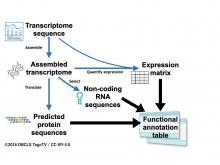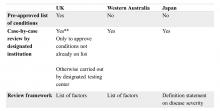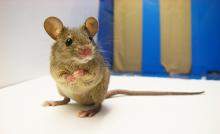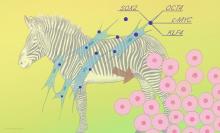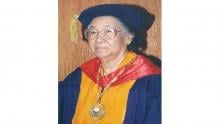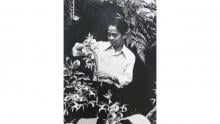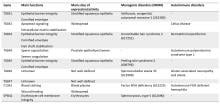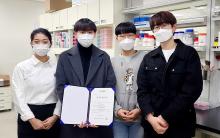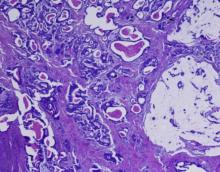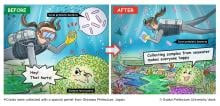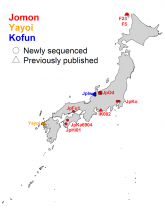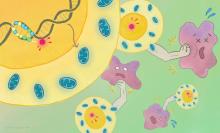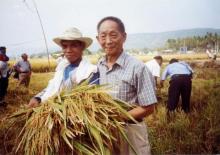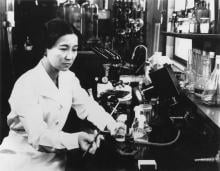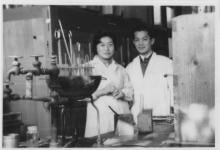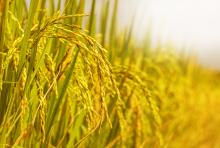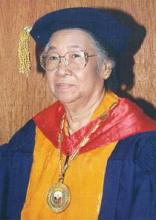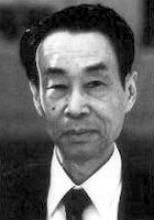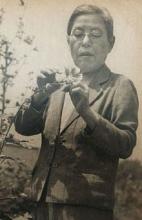Genetics
News
22 Jul 2022
Research team develops functional annotation workflow for genome sequencing of insects
08 Jul 2022
Asia Research News monitors the latest research news in Asia. Some highlights that caught our attention this week are zero-waste poultry processing that can boost lab-grown meat, residential facilities made for low-gravity environments, and new methods of cloning cells.
06 Jul 2022
Researchers from Osaka University examined how disease severity is evaluated in the context of preimplantation genetic testing for single-gene diseases (PGT-M) by conducting case studies of the regulatory frameworks governing PGT-M in Japan, the United Kingdom, and Western Australia through analysis of relevant policy documents. Results of their study showed that how policies define the standard for disease severity that would justify PGT-M and how decisions are made regarding the eligibility of individual cases have important social and ethical implications.
16 Jun 2022
Scientists have revealed the genetic structure and diversity, and inferred the population history, of the wild house mouse across Europe and Asia.
26 Apr 2022
Researchers set out to find new ways to artificially induce mRNA to respond in ways that could eventually lead to therapeutic outcomes, expanding on the success of the mRNA-based COVID-19 vaccines and opening up new possibilities across a host of possible genetic therapies.
25 Apr 2022
Examination of endangered species’ stem cells unveils ancient genetic links between mammals.
07 Apr 2022
Giants in History: Purnima Sinha (12 October 1927 – 11 July 2015), the first Bengali woman to receive a doctorate in physics, analysed clay structures using x-ray equipment that she built from salvaged World War II-era parts.
18 Mar 2022
Tohoku University scientists in Japan have developed a virus-based approach for measuring variations in gene regulatory elements, called transcription factors, as conditions change in live organisms.
16 Mar 2022
Microgravity worms help solve astronaut muscle problems, CO2 recycling and drug development, Remote control of robot hand, Enabling the study of diverse Hepatitis B. Read all in the March's Editor's Choice and even more in the Asia Research News 2022 magazine.
09 Mar 2022
Tests using a mouse model of Alport syndrome suggests that turning off a cell signalling protein may significantly prolong life by preventing kidney scarring.
03 Mar 2022
Giants in History: Gopalasamudram Narayanan Ramachandran (8 October 1922 – 7 April 2001) is best known for developing the Ramachandran plot to understand the structure of short chains of amino acids, known as peptides.
25 Feb 2022
Asia Research News monitors the latest research news in Asia. Some highlights that caught our attention this week are a nose to sniff out Parkinson's, the end of foggy glasses, and hidden salt in some medications.
17 Feb 2022
Giants in History: Barry Paw (29 August 1962 – 28 December 2017) was a biologist and oncologist born in Myanmar who discovered several novel genes and their functions in red blood cells.
10 Feb 2022
Giants in History: Eminent Filipina scientist and educator Clara Lim-Sylianco (18 August 1925 – 23 July 2013) is remembered for her extensive research on mutagens – often-carcinogenic agents that permanently alter genetic materials such as DNA – antimutagens and bioorganic mechanisms.
04 Feb 2022
Rice has long been a staple food for more than half the global population. The United Nations even declared 2004 the International Year of Rice to raise awareness and encourage action to protect and advance the crop for a rapidly growing population. The genetic guidance rice uses to grow and reproduce, however, is still not fully understood. Now, a research team based in Japan is learning more, including how critical one gene is for the plant to develop grains of rice, which serve as both seeds and food.
03 Feb 2022
Giants in History: Rapee Sagarik (4 December 1922 – 17 February 2018) was Thailand’s renowned expert on orchids. Sagarik dedicated his career to the research of native orchids in Thailand.
23 Dec 2021
By searching for the protein transglutaminase 1 (TGM1) among patients with various autoimmune skin diseases, researchers have successfully identified a separate disease that
can be linked to autoimmunity against TGM1. This backward method
demonstrates a new way of identifying autoantigens as markers for various
diseases. By letting autoantigens point to the disease, diagnosis and
treatment can be facilitated, according to the study now published in PNAS.
30 Nov 2021
Researchers at the Department of Microbiology at The University of Hong Kong have succeeded in the isolation of SARS-CoV-2 Omicron variant from clinical specimens. This is the first known research team in Asia that has succeeded in isolating the Omicron variant. The isolated variant will enable the development and production of vaccines against Omicron, which has been designated as a "variant of concern" by the World Health Organization.
09 Nov 2021
Researchers from DGIST explore the role of symbiotic skin bacteria in wound healing for different fish species
02 Nov 2021
The world’s largest analysis of gastric tumour cells provides a launch pad for scientists to plan more effective therapies.
27 Oct 2021
Giants in History: Maqsudul Alam (14 December 1954 – 20 December 2014) was a biologist from Bangladesh who is renowned for his research on genome sequencing.
27 Oct 2021
Researchers reveal correlation between ribotype (RT) strains of Cutibacterium acnes, which are found in human skin, and the lifespan of the nematode Caenorhabditis elegans. Strains RT4 and 8, which are associated with acne in human skin, shortened the lifespan of the nematode, while RT6, which are predominantly found in healthy human skin, did not. Also, it was found that the healthy skin-related RT6 strain of C. acnes improved C. elegans resistance to the pathogenic organism Staphylococcus aureus.
13 Oct 2021
Coral reefs, comprising some of the most diverse and delicate ecosystems under water, are under immense stress. From global warming to pollution to pathogens, many of the reef-building coral species are listed as threatened or endangered. But, according to researchers in Japan, the corals may have an unlikely ally: bacteria.
11 Oct 2021
A long-standing hypothesis, the dual-structure model, posits that Japanese populations derive dual ancestry from indigenous Jomon hunter-gatherer-fishers and succeeding Yayoi farmers. We conduct paleogenomic analyses of people of the Jomon, Yayoi, and Kofun periods from Japanese archaeological sites. We identify a later influx of East Asian ancestry in the Kofun period and clarify that the genome of the modern Japanese population is composed of three ancestral components, proposing a tripartite model of Japanese origins.
05 Oct 2021
Researchers from DGIST explain how DNA is compacted to a million-times its full length in sperm cell nuclei
15 Sep 2021
New research published in Stem Cell Reports has found elevated cholesterol supply from astrocytes to neurons in the model of Alzheimer's disease (AD) brains, suggesting that modulating brain cholesterol could be explored in the search of treatment options for the devastating, degenerative disease.
13 Sep 2021
iCeMS scientists and colleagues have designed a molecular code that powers up cancer-fighting immune cells.
11 Sep 2021
Giants in History: Chinese agronomist Yuan Longping (7 September 1930 – 22 May 2021) developed the first varieties of the high-yield, hybrid rice that brought food security to multiple countries including China, which had been ravaged by food shortages as recently as the mid-20th century.
10 Sep 2021
Magnetic patterns in meteorites, Treating mitochondrial diseases, underwater sensors and a broad COVID-19 vaccine in the September Editor's Choice. Plus, what's it like to communicate vaccine research in a pandemic and Asia Research News 2022.
Events
Sorry, no events coming up for this topic.
Researchers
Sorry, no researchers coming up for this topic.
Giants in history
Ruby Sakae Hirose (1904 – 1960) was a Japanese-American scientist whose research contributed significantly to our understanding of blood clotting, allergies and cancer.
Pakistani botanist Azra Quraishi (22 September 1945 – 22 November 2002) is recognised for developing virus-free seed potatoes that increased potato production in Pakistan by an estimated five per cent.
Indian botanist Shipra Guha-Mukherjee (13 July 1938 – 15 September 2007) made a breakthrough discovery that enabled the genetic study of plants and, by extension, the development of improved varieties of rice, wheat, potatoes, and other crops.
Irene Ayako Uchida’s (8 April 1917 – 30 July 2013) strides to understand genetic diseases such as Down syndrome paved the way for early screening of chromosomal abnormalities in foetuses.
Reiji Okazaki (8 October 1930 – 1 August 1975) and Tsuneko (7 June 1933) were a Japanese couple who discovered Okazaki fragments – short sequences of DNA that are synthesized during DNA replication and linked together to form a continuous strand.
Tsuneko (7 June 1933) and Reiji Okazaki (8 October 1930 – 1 August 1975) were a Japanese couple who discovered Okazaki fragments – short sequences of DNA that are synthesized during DNA replication and linked together to form a continuous strand.
In his over 30 year career in rice research, Munshi Siddique Ahmad (1924 – 19 October 2011) developed more than 30 varieties of high-yielding rice, including the BRRI Shail strain, which was responsible for increasing the rice production of Bangladesh from 8 million tonnes in 1965 to 20 million tonnes in 1975.
Eminent Filipina scientist and educator Clara Lim-Sylianco (18 August 1925 – 23 July 2013) is remembered for her extensive research on mutagens – often-carcinogenic agents that permanently alter genetic materials such as DNA – antimutagens and bioorganic mechanisms.
Motoo Kimura (13 November 1924 – 13 November 1994) was a Japanese theoretical population geneticist who is best remembered for developing the neutral theory of molecular evolution.
Janaki Ammal Edavalath Kakkat (4 November 1897 – 7 February 1984) was an Indian botanist who studied plant chromosomes and genetics.
Maqsudul Alam (14 December 1954 – 20 December 2014) was a biologist from Bangladesh who is renowned for his research on genome sequencing
Barry Paw (29 August 1962 – 28 December 2017) was a biologist and oncologist who discovered several novel genes and their functions in red blood cells.
Kono Yasui (16 February 1880 – 24 March 1971) was a Japanese botanist who researched the genetics of poppies, corn and spiderworts and surveyed the plants that had been affected by the nuclear fallout after the atomic bombings of Hiroshima and Nagasaki.
Hitoshi Kihara (1893 – 1986) was one of the most famous Japanese geneticists of the 20th century. One of his most significant contributions was identifying sex chromosomes (X and Y) in flowering plants.
Syed Qasim Mehdi (13 February 1941 – 28 September 2016) was a Pakistani molecular biologist who was a founding member of the Human Genome Diversity Project (HGDP), which assessed human diversity by studying human migration, mutation rates, relationships between different populations, genes involved in height and selective pressure.



